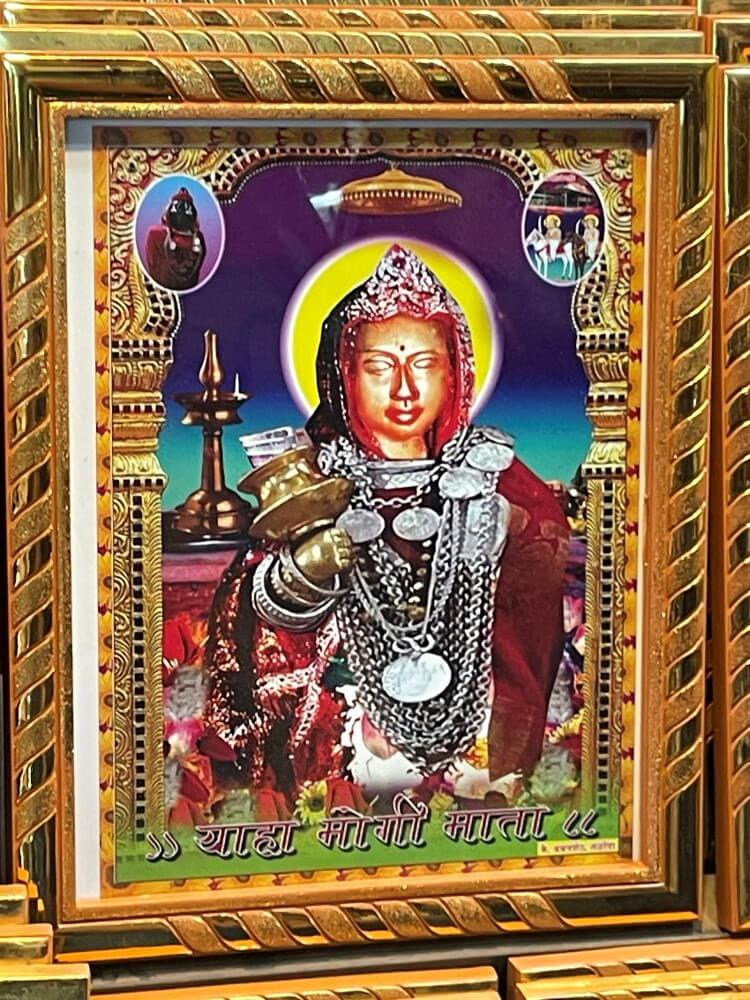
The ancient Devmogra Mata Temple, dedicated to the clan goddess of the tribal communities from Maharashtra, Gujarat, Madhya Pradesh and Rajasthan, is located in Devmogra village, Sagbara Taluka, Narmada District, Gujarat. Worshipped as the Goddess of Grains, she is affectionately called ‘Yaha Mogi’ (Mother) in the tribal language. Also known as Panduri or Pandhar Mata and Kansari Mata, this goddess is deeply revered in the Satpuda region. Every year, a grand five-day fair is held here during Mahashivratri, attracting over 500,000 devotees.
Panduri Mata is particularly revered among the Bhil tribe as Kuldevi (clan goddess) residing in the Satpura mountain ranges. Anthropologist T. B. Naik from the School of Oriental and African Studies, University of London, documented Bhil culture in his 1956 book ‘The Bhils – A Study’. He recorded that Raja Pantha was a major deity of the Bhil tribe and Devmogra was his wife. According to local legends, in ancient times, tribal kings ruled the Akkalkuwa (Nandurbar District, Maharashtra) area. This region was known as Daab. Even today, there is a village named Daab. Neighboring this region were several tribal communities like Nahal,
Nimbadi, Ambuda (Vasava), Dubla, Dehvaavya, Mavchi, who came together to form a large state known as Daabmandal. It is said that Devmogra (Yaha Mogi) was born in the home of a tribal farmer from Mavchar Pati. 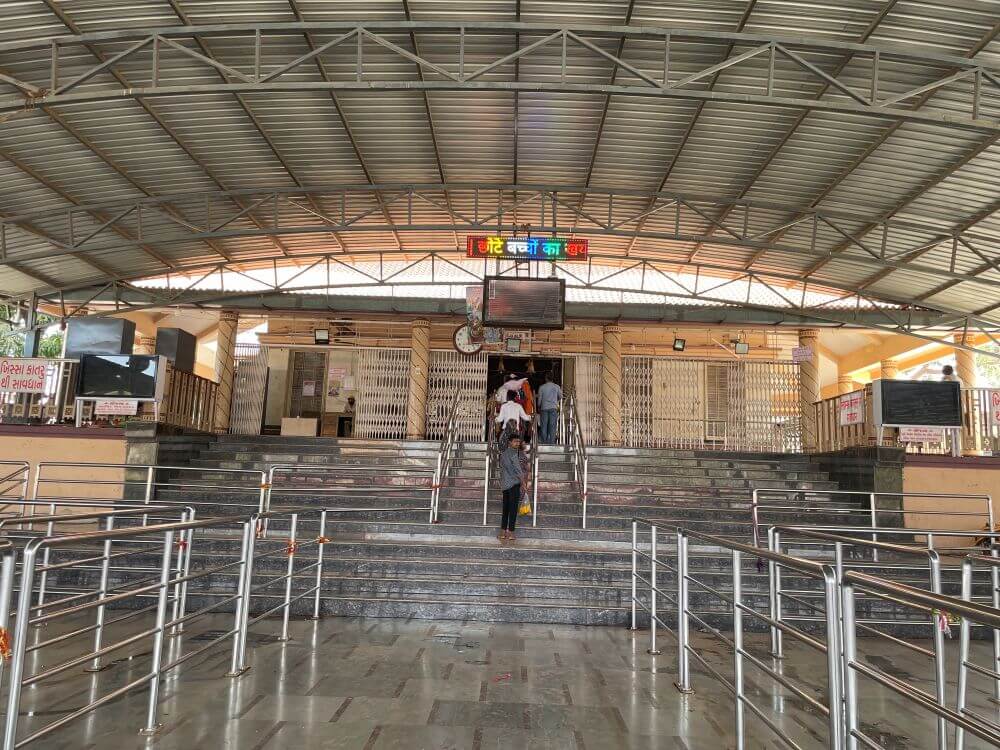 The farmer had seven daughters; Panduri Devi was exceptionally beautiful. Suitors coming to see her elder sisters preferred Panduri Devi as a bride instead, leading to delays in her sisters’ marriages. Saddened by this situation, Panduri Devi left her home to live in the forest.
The farmer had seven daughters; Panduri Devi was exceptionally beautiful. Suitors coming to see her elder sisters preferred Panduri Devi as a bride instead, leading to delays in her sisters’ marriages. Saddened by this situation, Panduri Devi left her home to live in the forest.
Soon after, the region was struck by a famine. While wandering in the forest in a starved condition, Panduri was found near death by Kol Padshah, also known as Baha Gorya, the ruler of Daab. He brought her home and his queen Devgondar raised her as her own daughter, earning her the name ‘Pohli Pandhar’ (the fostered or nurtured one).
To the west, in Ambuda, ruled King Tarhamal, identified by Naik as Tarya Baman. His son Raja Pantha was strong and mighty. When Panduri came of age, Pantha wished to marry her. 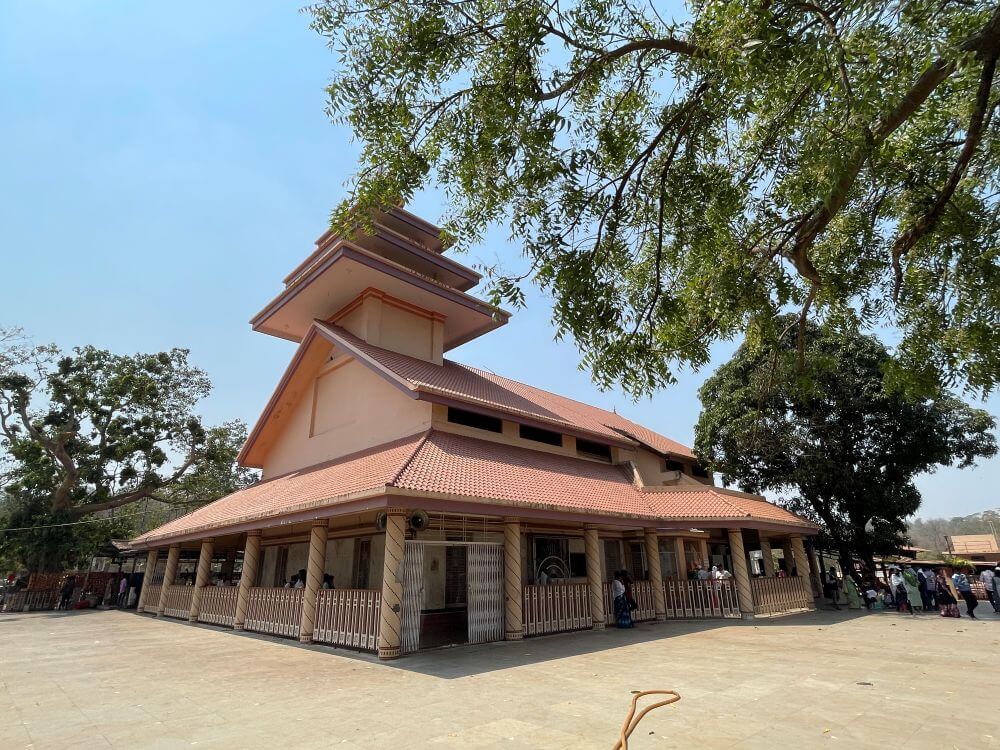 However, Baha Gorya, already having eight queens, insisted Pantha live as a gharjamai (resident son-in-law) for seven years. After completing the condition, Pantha left with Panduri, but her father Tarhamal refused them entry. They then settled in Devmogra.
However, Baha Gorya, already having eight queens, insisted Pantha live as a gharjamai (resident son-in-law) for seven years. After completing the condition, Pantha left with Panduri, but her father Tarhamal refused them entry. They then settled in Devmogra.
Later, another severe famine hit. While people migrated, Panduri bravely traveled to Guzri, procured food and livestock with the help of Raja Pantha and her brother Vina Thakor and distributed it among the people. This act earned her the title ‘Yaha Mogi’ (Mother of the People).
It is said that after her death, to honor her, Raja Pantha and Vina Thakor made a golden idol of her. To protect it from invaders, their descendants buried the idol. 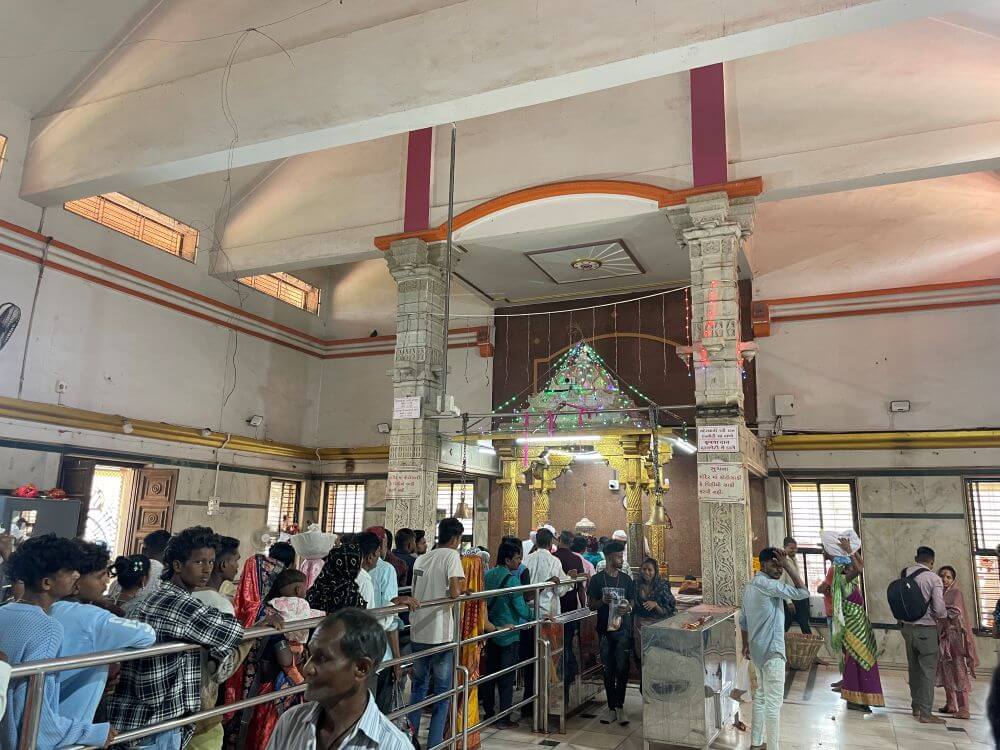 Champaji Vasava, an ancestor of the Sagbara royal family, received a divine vision and unearthed the idol beneath a rock. He enshrined it on Mahashivratri, establishing her as their family deity. The goddess thus became known by the village’s name, Devmogra.
Champaji Vasava, an ancestor of the Sagbara royal family, received a divine vision and unearthed the idol beneath a rock. He enshrined it on Mahashivratri, establishing her as their family deity. The goddess thus became known by the village’s name, Devmogra.
Originally a small shrine, the temple has been expanded through various renovations. Located in a sprawling complex, the temple is built in Nepali architectural style, resembling the famous Pashupatinath Temple in Nepal.A tall wooden flagpole wrapped in red cloths (chunris) stands in front of the modern temple. After ascending steps, devotees reach a grand mandap (hall) supported by four gold-plated, intricately carved pillars, which houses the golden idol of Devmogra Mata, depicted in tribal attire, standing in a grain basket. 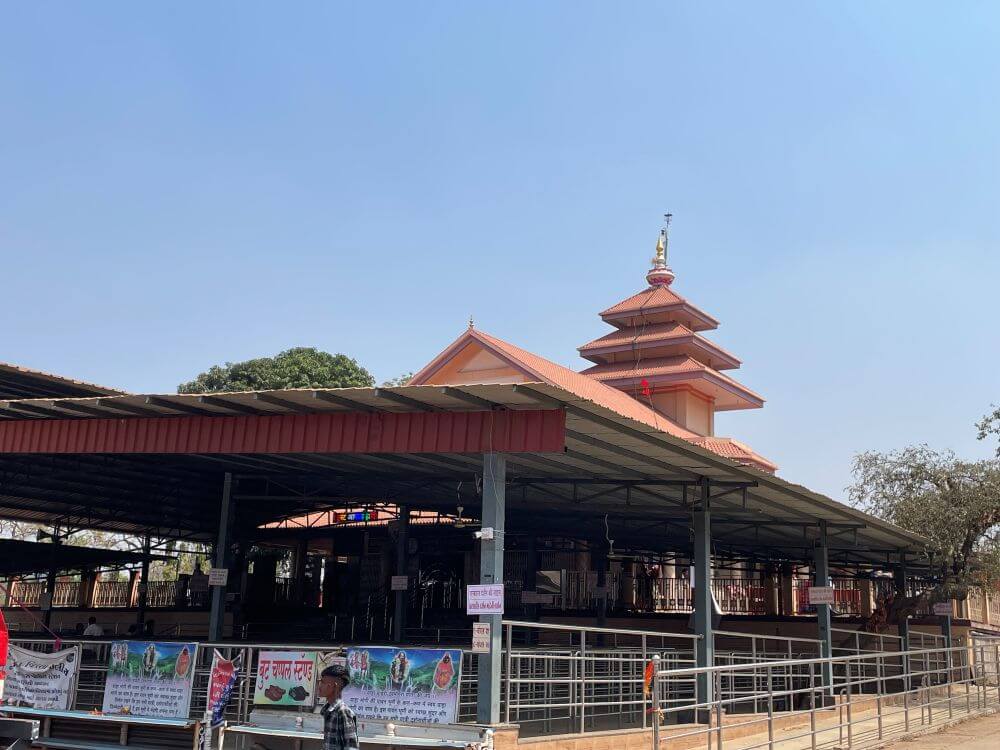 She holds a milk pot in one hand and a rope for tying cattle in the other. Above her is a silver canopy.
She holds a milk pot in one hand and a rope for tying cattle in the other. Above her is a silver canopy.
The temple has a pagoda-style tower topped with a kalash and amalaka. To the right is a platform for coconut-breaking rituals. Beneath a tree nearby, several smaller idols of the goddess are placed and worshipped. A unique belief exists about this sacred tree: the direction in which new leaves sprout is believed to indicate the region of abundant crops that year.
Devotees offer grain from their own farms to the goddess before using it at home, a tradition called ‘Noven Verulo’. Offerings also include silver necklaces, scarves and jewelry. 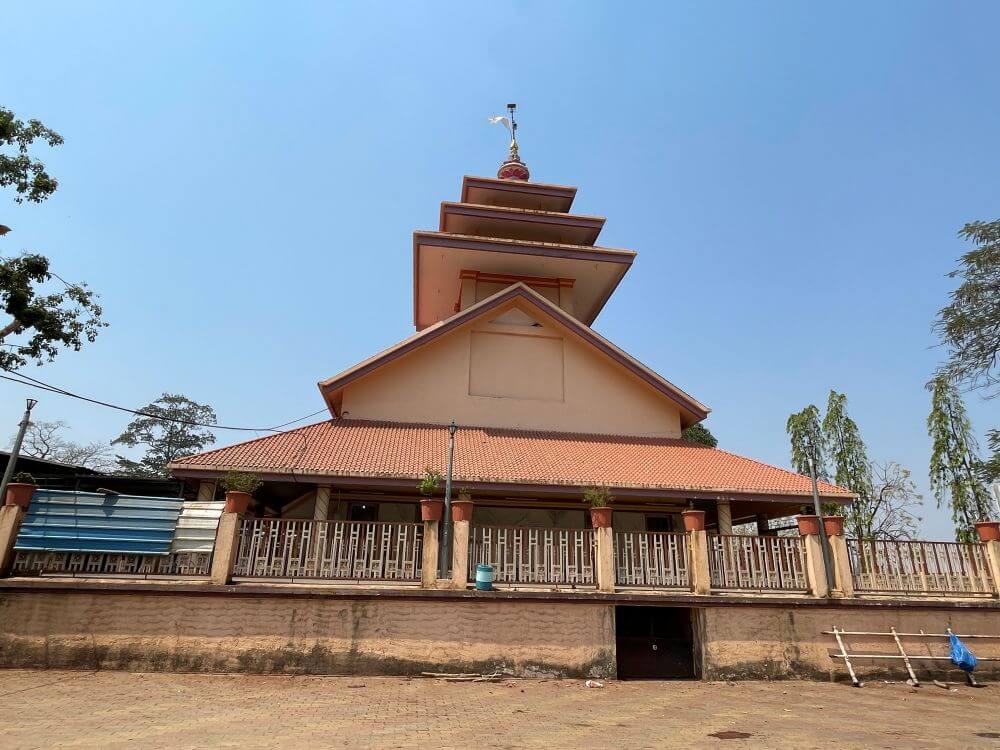 A handful of grain from the goddess’s basket is taken home and mixed with the household grain, believed to bring prosperity. The first distillation of mahua liquor is traditionally offered to the goddess.
A handful of grain from the goddess’s basket is taken home and mixed with the household grain, believed to bring prosperity. The first distillation of mahua liquor is traditionally offered to the goddess.
Held annually during Mahashivratri, the five-day Devmogra Fair is one of 280 tribal festivals among the 1,521 annual fairs in Gujarat. Organized by the Sagbara royal estate, the first ritual worship is performed by the royal family, who also bear its expenses. On the main day, the idol is ceremonially taken to Mogarmukhi, the site of Raja Pantha, about 1 km away. There, she is bathed in the Gadka River. During the ritual, five armed police officers fire ceremonial rounds in salute. Priests then pierce a stone with a spear and the water that seeps out is used to predict rainfall and crop yield for the coming year.
About 500,000 devotees attend this fair. Many arrive in ‘Hobne’-processions of 10-15 bullock carts, carrying bamboo baskets (Hijari) containing offerings like liquor, coconuts and rice. These baskets are never placed on the ground until they reach the temple. Some devotees also bring votive roosters or goats and many fast for one and a quarter months before ending it after the darshan of the goddess. Besides Devmogra, there are temples dedicated to the goddess in Daab village and Bardipada in Nandurbar district, Maharashtra.
